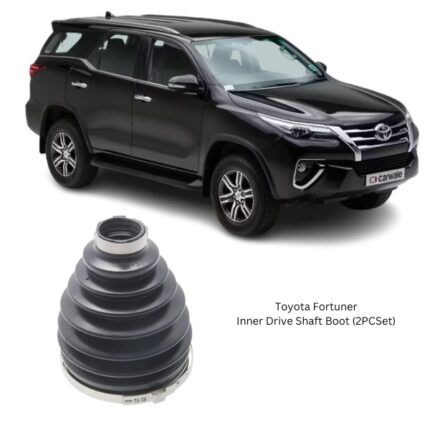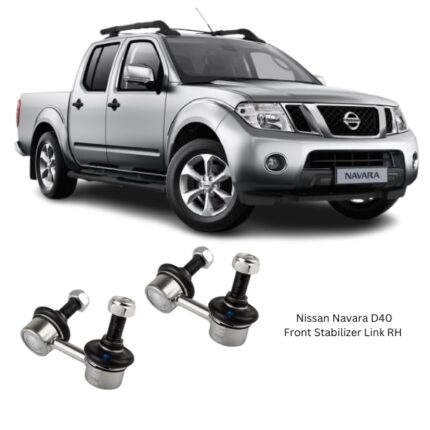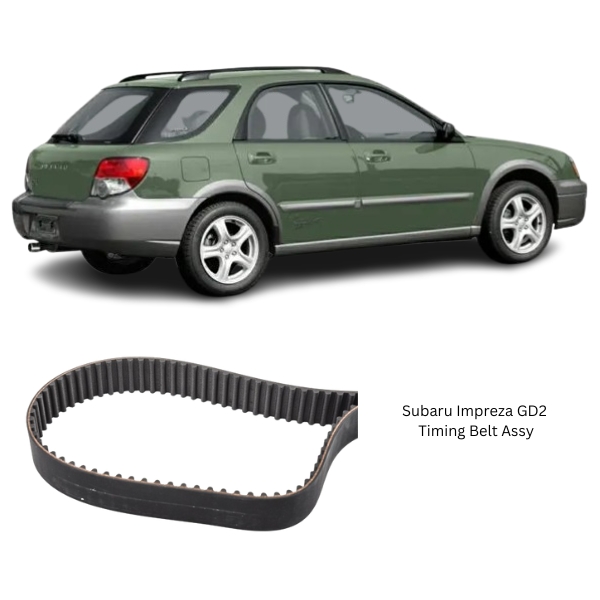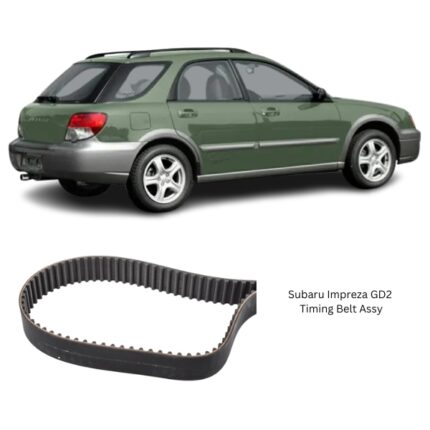-14%
Get Subaru Impreza GD2 Timing Belt Assy 223YU27 in Kenya
The Timing Belt Assembly, commonly referred to as the cam belt, is a critical component within an internal combustion engine. Despite its modest appearance, this high-performance, precision-engineered belt has the vital task of synchronizing the rotation of the crankshaft and camshaft(s). This synchronization ensures that the engine’s valves open and close at precisely the right intervals during each cylinder’s intake and exhaust strokes, maintaining the correct engine timing and preventing catastrophic internal damage.
When combined with tensioners, idler pulleys, and guides, the timing belt assembly forms an integrated system that governs valve timing and ensures optimal combustion efficiency, engine longevity, and power output.
Purpose and Functionality
The primary purpose of the timing belt is to maintain mechanical harmony between the engine’s crankshaft and camshaft(s). In interference engines, where the pistons and valves occupy the same space at different times, a failure in this synchronization can result in valve collision, leading to extensive engine damage.
Key Functions of the Timing Belt Assembly:
-
Synchronization
It ensures that the camshaft turns at exactly half the speed of the crankshaft, which is essential for accurate valve timing. -
Coordination of Valve Operation
Ensures that the intake and exhaust valves open and close at the right moment, aligning with the piston’s position. -
Drives Additional Components
In some engine designs, the timing belt may also power components like the water pump, balance shafts, or oil pump, making it central to the operation of auxiliary systems. -
Ensures Efficient Combustion
Accurate valve timing guarantees that the air-fuel mixture is admitted and expelled correctly, enhancing fuel economy and performance.
Design and Construction
The Timing Belt Assembly is engineered to withstand extreme operating conditions. It is made from advanced materials and constructed to resist wear from heat, tension, oil exposure, and rotational force. It is a toothed belt that meshes precisely with toothed pulleys to eliminate slippage and maintain timing accuracy.
Belt Structure:
-
Tooth Profile
The inner surface of the belt has precision-molded teeth that fit into the sprockets on the crankshaft and camshaft. The tooth shape (curved or trapezoidal) is chosen based on load and application. -
Tensile Cord Layer
Embedded within the belt is a high-strength cord, typically made from fiberglass, aramid, or Kevlar, which provides the belt with tensile strength and prevents elongation under tension. -
Backing and Tooth Facing
The outer surface and tooth side are made of heat- and oil-resistant synthetic rubber or polyurethane, providing durability, flexibility, and resistance to wear and environmental degradation.
Additional Components in the Assembly:
-
Tensioner Pulley
Maintains the proper amount of tension on the belt. Available in automatic (spring-loaded) or manual configurations. -
Idler Pulley
Helps guide the belt through its routing and reduce belt vibration or slack. -
Water Pump (in some applications)
In many engines, the timing belt also drives the water pump. A failing water pump can cause belt misalignment or failure.
Each part of the assembly is precision-matched to ensure smooth operation and optimal belt alignment, tension, and contact pressure.
Material Options and Durability
Modern timing belts are manufactured using materials specifically chosen for longevity, reliability, and temperature resistance.
-
Neoprene Rubber
Historically used, but less resistant to high temperatures and chemicals. -
Hydrogenated Nitrile Butadiene Rubber (HNBR)
Offers excellent resistance to oil, ozone, and temperature. Common in high-performance belts. -
Polyurethane (PU)
Offers superior resistance to abrasion and chemicals, often found in heavy-duty or performance applications. -
Reinforced Fiberglass or Kevlar Cords
Embedded cords prevent stretching and maintain belt length over time.
Depending on the engine design and driving conditions, timing belts are designed to last between 60,000 and 160,000 kilometers.
Importance in Engine Health
The Timing Belt Assembly is not just a maintenance item—it’s a central mechanical link in the engine’s operation. If the belt stretches, slips, or breaks:
-
Valve timing becomes inaccurate
-
Fuel-air mixture may not ignite properly
-
Engine misfires, stalls, or loses power
-
In interference engines, pistons may collide with valves, causing severe engine damage
Thus, the timing belt plays a direct role in:
-
Power delivery
-
Fuel efficiency
-
Emission control
-
Engine durability
Common Signs of Timing Belt Wear or Failure
Although timing belts are made for longevity, they are not immune to wear. Recognizing early symptoms of belt degradation can prevent engine failure.
-
Ticking or Clicking Noise from the Engine
A worn belt may cause unusual mechanical sounds during operation. -
Engine Misfires
Incorrect valve timing can lead to inefficient combustion and misfiring. -
Oil Leaks Near the Belt Cover
Leaking oil can degrade the belt material over time. -
Difficulty Starting the Engine
In cases of timing misalignment, the engine may crank but fail to start. -
Engine Won’t Turn Over
A snapped belt means the camshaft no longer rotates, halting the engine entirely.
Installation and Replacement
Replacing the Timing Belt Assembly is a complex, labor-intensive task. It requires engine disassembly and precise reassembly, often done in conjunction with:
-
Tensioner and idler pulley replacement
-
Water pump replacement (if belt-driven)
-
Front crankshaft and camshaft seal replacement
-
Coolant flush (if the water pump is involved)
Key Replacement Guidelines:
-
Always replace the full belt kit—not just the belt
-
Confirm correct belt routing and cam/crank timing alignment
-
Torque all fasteners to manufacturer specifications
-
Bleed cooling system (if water pump is included)
-
Reset engine timing references before starting the engine
After replacement, verify engine idle quality, check for abnormal noises, and test drive under varying load conditions.
Maintenance Best Practices
To preserve the timing belt’s lifespan and engine health:
-
Inspect regularly—especially after 60,000 km
-
Replace proactively—follow manufacturer mileage and time intervals
-
Avoid oil contamination—repair leaks promptly
-
Replace tensioners and pulleys—worn accessories can lead to early belt failure
-
Keep engine bay clean—debris can degrade belt material
Neglecting replacement intervals can lead to valve damage, piston bending, or total engine failure, particularly in interference engines.
Follow us on Facebook for more parts.





Reviews
Clear filtersThere are no reviews yet.